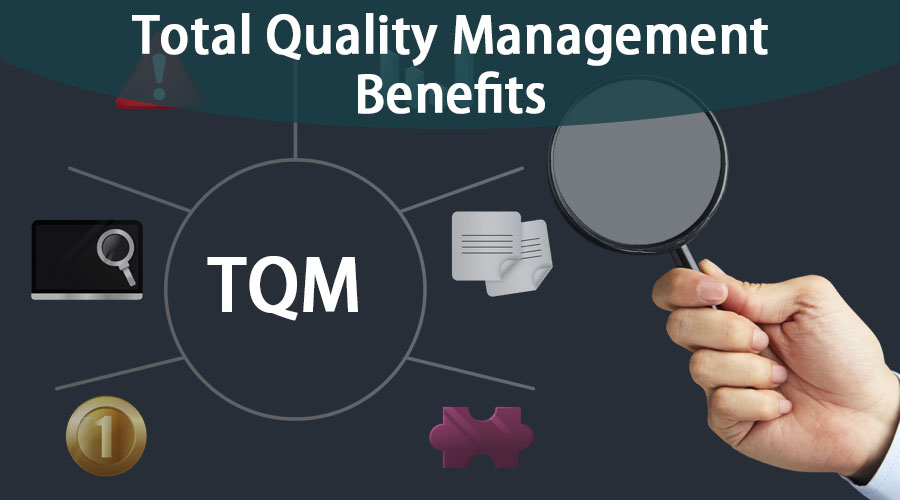
This involves streamlining operations, optimizing workflows, and eliminating any activities that do not add value. By doing so, organizations can accomplish more with less effort and resources, reducing turnaround times and increasing the capacity to deliver products and services faster and more reliably. The implementation of Total Quality Management offers a range of benefits that can significantly transform an organization.
Process-Based Tasks
- Join the Simplilearn PMP Certification Course, which covers crucial project management topics and emphasizes strategic and business knowledge with hands-on experience.
- A focus on improving the quality of products and services requires accountability.
- By focusing on quality in every step of production and service delivery, organizations can significantly reduce errors, defects, and inconsistencies.
- To have a customer-focused TQM process, start by determining your customers’ needs, desires, and roadblocks to success.
- TQM strives to allow everyone to be on the same page at the same time by linking data sources and sharing information across systems.
The process of improvement should never stagnate, ensuring that the pursuit of perfection never ends. Recurrent issues could be indicative of a deeper issue, requiring large-scale changes to current procedures. An error is an opportunity to assess a problem, but it’s also a chance to discover what is working. Total quality management practitioners should take advantage of errors as a chance to learn from their mistakes and find ways to avoid them in the future. The first step for implementing any new system is an honest assessment of the organization as it is today. Implementation of TQM is something that has to be applied to the current structure of the organization; there is no step-by-step guide that will tell you how to do it for your business.
The Key Players in Total Quality Management: Customers, Suppliers, and Employees
If you plan for a short term intervention then you may hit your target but then lose all your good work. Remember to sustain and embed quality and continuous improvement is the ultimate goal. Various iterations of TQM have been developed, each with its own set of principles. These include good leadership, emphasis on quality, customer priority, error correction and improvement as an ongoing process, and job training.
The HubSpot Customer Platform
Creating an emphasis on customer satisfaction will change the way departments think about their duties. If something they are doing isn’t aiding in the improvement of the quality of the product or increasing the customer’s experience, they aren’t headed in the right direction. They expect organizations to leverage that power to provide them with the utmost in quality service and products. When planning and implementing a TQM, there is no one solution for every situation or workplace.
Total quality management vs. quality management

TQM is not just confined to the workplace; its significance extends to supplier relationships as well. Collaborative partnerships with reliable suppliers contribute to the overall quality and efficiency of the supply chain. The integration of TQM reduces errors, issues, and manufacturing costs, directly contributing to increased profitability and overall cost reduction. Connect with our experts to learn how BIMcollab can streamline your projects, enhance collaboration, and drive growth. Organizations are typically structured into departments which are managed by a responsible leader.
Is the Quality of Products Made in China Really That Bad?
Learning to snatch victory from the jaws of defeat is the pursuit of quality management when it comes to dealing with incidents and outages. It’s essential to ensure that everyone in the organization takes the proper steps at the right time to ensure consistency and speed up production. Implementing this principle means you need to measure and analyze your current processes to look for potential improvements or bottlenecks to remove. You also need to evaluate the impact your processes could have on all your stakeholders, from customers to suppliers to employees. Companies that have not yet implemented TQM should consider doing so in order to stay competitive and meet the changing needs of customers in today’s business environment. TQM can help organizations to improve their efficiency, reduce costs, and increase customer satisfaction, which are all essential for long-term success.
Their goal is to identify areas for improvement, develop solutions, and implement changes that enhance quality. Only when this change is institutionalized does a continuous improvement process endure even after the top executive moves on to other responsibilities. Such a step requires the use of formal policies, systems, and structures as well as flexible, re-assessable implementation plans. TQM has evolved over a period through practice and the contribution of principles by various gurus in the field of quality. The TQM way of product realization is by continuously identifying activities and processes for incremental and breakthrough improvement so as to provide the best to the customer.
These processes are then continually analyzed to better understand deficiencies in the process. The card is removed and moved up the supply chain right before a part how does leasing a car work is installed in a car, effectively requesting another of the same part. This allows the company to keep its inventory lean and not overstock unnecessary assets.
This can include training on quality management techniques, such as Six Sigma and Lean, as well as providing employees with the necessary tools and equipment to carry out their work effectively. By providing employees with the necessary tools and training, TQM helps to increase their skills and confidence, which can lead to increased engagement and empowerment. Total Quality Management is a philosophy of continuous improvement that enables your business to improve results over time. By focusing on your customers, fostering employee commitment, and striving for continuous improvement in your operations, you should see reduced costs as well as improved sales and product quality. TQM encourages organizations to examine their processes closely and continuously seek ways to make them more efficient.
